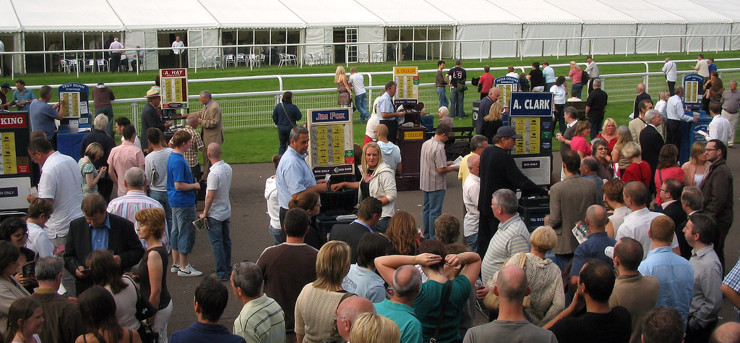
You might have thought that Tic-tac was a small sweet but you’d be wrong. We’re talking horse racing and betting here and Tic-tac is a form of sign language that is used to communicate the odds of a horse. It is unclear exactly when it was first developed but up until around the turn of the millennium it was commonly used at most race tracks. Mobile and computer technology have now rendered it all but obsolete, although it is still occasionally seen at some racetracks.
The Tic-tac man at a track, often wearing white gloves to make his signals clearer, would use a variety of signals and gestures to communicate changes in odds to other bookies, officials and other members of their team. John McCririck, the former Channel 4 racing pundit was one of the most famous Tic-tac users and cut an eccentric figure in his trademark hats, large beard and flailing Tic-tacking limbs.
Tic-tac Slang & Signs

Tic-tac encompasses different hand gestures and slang, often derived from rhyming slang or backslang to convey the various odds, for example 4/1 is “rouf” (which is “four” backwards, in case you didn’t spot it!). Below is a selection of the most common ones.
- Evens – Also called straight up, Scotch, levels, you devils or Major Stevens, the gesture for this is to extend the forefingers on each hand and then move them up and down in opposite directions.
- 5/4 – Known as wrist, the sign for 5/4 is simple and is just placing the right hand on the left wrist.
- 6/4 – Another simple gesture, 6/4 is shown by touching the back of the right hand to the left ear, whilst in slang it is known as either ear’ole or exes to rouf (backslang from four and pronounced at “rofe”.
- 15/8 – Known as double tap, 15/8 is shown by touching the right hand to the left shoulder twice.
- 9/4 – A simple one to spot, 9/4 will see the Tic-tac man place both hands on his head, hence the slang “top of the head”.
- 3/1 – A price of 3/1 is called carpet and is gestured by placing the palm, face down, on the chin.
- 5/1 – The slang term is either hand, handful or ching and the gesture is moving the right hand to the right shoulder.
- 8/1 – This is called TH, said as “tee, aitch”, and is motioned by moving the right hand to the right shoulder and the hand to chin, palm facing down.
- 16/1 – Net and ex, derived from ten and six spelt backwards and indicated by punching the fists together, then right hand to right shoulder, then right hand to the head. Easy!
- 20/1 – Double net (double ten) is shown by punching the fists together twice.
- 50/1 – Bullseye, for obvious reasons, is indicated by hitting the two fists together, one on top of the other.